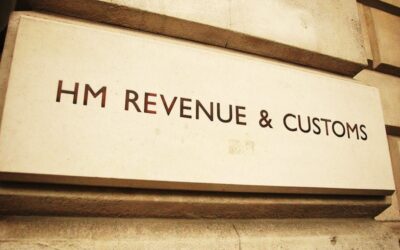We have recently had an op-ed published in the magazine HMRC Enquiries, Investigations and Powers. Below is the text in full.
The Tax Fraud Gap
The pressure on HMRC to tackle tax fraud is immense. After rolling out multiple coronavirus support schemes in a fast and efficient manner, the organisation now has to deal with a staggering amount of fraud and error in claims for furlough, eat out to help out, and the self employed income support scheme – all this against the backdrop of potential cuts to an already stretched headcount. It’s more important than ever to make the argument that HMRC’s compliance work is good value for money, and that the tax gap is being successfully tackled.
The UK Tax Gap
The annual estimate of the amount of tax lost each year in the UK, known as the Tax Gap, is a matter of significant public interest. HMRC has been making estimates since the early 2000s, and has published them every year since 2008. While other countries perform similar exercises, HMRC is the only tax authority in the world that publishes an annual estimate of losses for all forms of taxation. It is frequently stated that the UK has one of the lowest Tax Gaps in the world – but this is misleading, as it suggests there are a number of countries that measure Tax Gaps in a broadly comparable way.
The UK Tax Gap is a net figure, and takes into account ‘compliance yield’ – which is the amount of tax collected though enforcement activity. The difference between the net and gross Tax Gap is substantial. In previous years, the compliance yield figure is equivalent to one third of the net Tax Gap. The most recent Tax Gap, covering the 2020-2021 financial year, stands at £32bn (2019-2020 £34.4bn), or 5.1% of tax liabilities (2019-2020 5.1%).
Unlike the Department of Work and Pensions which analyses benefits payments in terms of fraud, claimant error, and official error, HMRC does not provide any estimate of tax lost to fraud. Instead, HMRC identify several behaviours leading to non-compliance – some of which clearly arise from fraudulent or dishonest behaviour. Of these behaviours “Criminal Attacks” accounts for £5.2bn, “Evasion” £4.8bn, “Hidden Economy” £3.2bn and “Avoidance” £1.2bn. Taken together, these behaviours are worth £14.4bn in tax losses, 45% of the entire Tax Gap. This is a small increase on previous years.
| £bn | 2021 | 2020 | 2019 | 2018 | 2017 |
| Criminal Attacks | 5.2 | 5.2 | 4.5 | 4.9 | 5.4 |
| Evasion | 4.8 | 5.5 | 4.6 | 5.3 | 5.3 |
| Hidden Economy | 3.2 | 3 | 2.6 | 3 | 3.2 |
| Avoidance | 1.2 | 1.5 | 1.7 | 1.8 | 1.7 |
| Tax Fraud Gap | 14.4 | 15.2 | 13.4 | 15 | 15.6 |
| Total Tax Gap | 32 | 34.8 | 31 | 35 | 33 |
| % of Tax Gap resultant from fraud | 45.00% | 43.68% | 43.23% | 42.86% | 47.27% |
1It should be noted that these figures are taken from the reports published at the time, and do not reflect future revisions in the Tax Gap, which can lead to fluctuations in the total Tax Gap.
Avoidance is included given the way in which HMRC’s define avoidance. This excludes tax planning and is limited to non-compliance arising from tax schemes that attempt to “exploit” the tax system through “contrived or artificial” transactions. These schemes usually involve fraudulent behaviour at some stage of their execution.
Some categories of behaviour which HMRC use to define the Tax Gap will contain a mixture of honest and dishonest behaviour. For example, Legal Interpretation (£3.7bn) – can include disputes that arise from either honest or dishonest interpretations of tax law on the part of tax lawyers. As a result of this lack of clarity in the data, the £14.4bn figure for tax fraud will actually be an underestimate.
The Tax Gap also explicitly does not measure the impact of profit shifting, meaning that these figures cannot really be considered to be a comprehensive or reliable estimate of tax avoidance in the UK – it is certainly not a measure that the public would recognise.
Profit shifting is the most high profile form of tax avoidance, the type of avoidance employed by large global businesses like Google, Starbucks, Apple and Nike. Although it is notoriously difficult to develop an accurate estimate for the impact of profit shifting on the tax take, academic studies found that losses to the UK Treasury due to profit shifting could by up to £20bn a year. HMRC’s figure for non-compliance of all forms by large companies is £0.6bn.
Another area of concern is the payment of corporate subsidies via the tax system. There is no mention in the Tax Gap of non-compliance in the area of tax reliefs, such as R&D tax credits. Under HMRC’s own estimates, the Treasury lost £336m to fraud and error in the R&D tax credit system. HMRC should clearly state how it deals with corporate benefit payments in its Tax Gap, and whether fraud and error in these programmes are included in their Tax Gap estimate.
The Impact of Covid-19
The latest Tax Gap is also the first impacted by Covid-19. During the pandemic, HMRC paused a large amount of its compliance work. Because the Tax Gap is a net figure which includes compliance yield, then this should have led to a significant increase in the Tax Gap figures. However, HMRC made an adjustment to their methodology to change how they accounted for compliance yield. This apportioned the drop in compliance yield to previous years and reduced this year’s Tax Gap by £700m or 0.1% of total tax liabilities.2 This is significant because had this adjustment not been made, the Tax Gap will have increased as a per cent of total tax liabilities for two years in a row.
The 2020-2021 figures also do not include estimates of fraud and error arising from the three coronavirus support schemes which HMRC administered; Coronavirus Job Retention Scheme (CJRS, more commonly known as furlough), Self-Employment Income Support Scheme (SEISS), and Eat Out to Help Out (EOHO). Recent HMRC estimates put the total of fraud and error in these schemes at £4.5bn.
If the Tax Gap were to include the drop in compliance yield in line with previously published figures, and the losses to the Covid relief schemes, then the total Tax Gap would see a significant increase on the previous year’s figures.
HMRC’s interpretation of tax law
The term, “what should be collected” is also problematic as the word “should” is of course open to interpretation. HMRC defines what “should” be collected as – “the tax that would be paid if all individuals and companies complied with both the letter of the law and HMRC’s interpretation of the intention of Parliament in setting the law (referred to as the spirit of the law)”. This is in effect a measure based on how HMRC chooses to apply the law.
The difficulty with this is that it suggests that HMRC can easily reduce the Tax Gap by simply being more lenient in the way it interprets the law. This puts HMRC in a difficult position with regards to the Tax Gap – if there was demand for HMRC to take a tougher stance on tax avoidance, that in itself would cause an increase in the Tax Gap, leading to a perception that the agency was performing poorly, even if more tax was collected.
The future of tax compliance
The Public Accounts Committee has recommended that HMRC should set specific targets for reducing the tax gap, a recommendation HMRC does not agree with given that several factors are outside the scope of the departments control. This is a difficult situation as there is understandably scepticism that if targets are set then missed, this could lead to the perception that the department is underperforming.
With staffing numbers down almost 40 per cent since the department was created, HMRC has its work cut out in administering the tax system, coping with the backlog from the pandemic, along with the extra complexities resulting from the UK’s departure from the European Union. Publishing the tax gap is just one part in explaining the work HMRC does, but more can be done to communicate the importance of compliance work.
The Spring 2022 Budget announced that HMRC was set to receive an additional £161m of funding for its compliance work, which is expected to generate more than £3bn in additional revenues over the next five years. This is a return on investment of £18 in additional tax revenues for every £1 invested in compliance. Arguments can be made about the strategy to tackle tax fraud, or the methodology behind the tax gap, but ultimately everything the department does comes down to resources available. The bottom line is that government investment in HMRC compliance results in greater tax revenues – and in turn a smaller tax gap.



